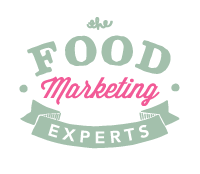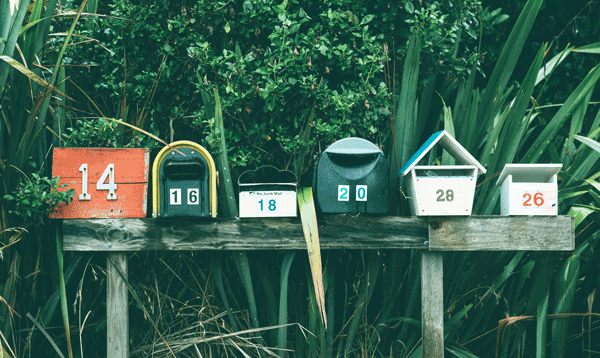Company newsletters are still an important communication tool. Newsletters give you a great opportunity talk directly to your customer, they also give you valuable insights about what topics and content your customers are interested in, what they want to engage with and share. Sure, social media channels are effective in their own right, but delivering valuable content straight into your customer’s inbox is worth its weight in gold when done correctly.
Here are some of our top tips for consideration when planning your company newsletter.
Content is still king
Content will always be king, and a newsletter is one of the best ways of sharing this content with your subscribers. For the subscriber, receiving great content and being able to share this knowledge or special offer with their friends, colleagues and family makes them feel special, it puts them in the driving seat and helps build brand loyalty.
Remember, a newsletter is a way of driving your audience back to your website which is the best reflection of your business where you can offer your customers more information and more importantly, generate sales. If your website doesn’t reflect the information you are providing in your newsletter your audience could be left feeling confused and frustrated.

Know Your Audience
Understanding your audience will help you write a more relevant, compelling newsletter. Think about how you have built your database; did you collect their information at a trade show, if so what type of people attended, what are their other interests, where do they live. For example, there is no need to include information about a local event you are attending if most of your audience live in a different country. When you understand who you are writing your newsletter for, it makes the content more relevant, and when the content is relevant, you will build better brand loyalty.
Think About Timing
Depending on the style and content of your newsletter, once a week or once a month is ideal. But more importantly make sure they are regular, the spray and pray method will not help build a loyal following when it comes to email newsletters. Regular updates or special offers are something to look forward to, especially when they are relevant to seasons, special events or holidays.
What time of day you send your newsletter is also going to play a key part. If mums are your main audience, school run times are probably not a great time to send them a newsletter. Likewise, if you are targeting professionals, it may be good to send their newsletter just before their commute to work.
Think about your audience and what their day would look like, then test a few different times to see what works for your audience.
Understand How Your Information is Going to be Consumed
Before sending your newsletter it is crucial that you check the layout works on a mobile. Depending on the demographic of your database, a smartphone could well be the only device that your newsletter is viewed on, if these stats are anything to go by:
81% uses a smartphone for regularly checking emails. 21% uses a tablet. Smartphones are the most common device especially for younger individuals (less than 35 years old) and females. – Adobe “Email Use 2017 – US Report” (2018)
About 3 in 5 consumers check their email on the go (mobile) and 75% say they use their smartphones most often to check email. – Fluent “The Inbox report, Consumer perceptions of email” (2018)
Personalise Your Campaigns
Personalising your newsletters could be as simple as adding your customers’ name in the subject box or start of the email. Alternatively, it could be as advanced as using segments to ensure your customers only received the information they have selected to hear when they determined their preferences. Either way, a personal touch will no doubt make your customers feel more special. According to Campaign Monitor– Emails with personalized subject lines are 26% more likely to be opened.
Don’t Waffle
It’s good to keep things brief, no one has got time to trawl through a longwinded email. Simply pick a topic or an offer and run with it. Give your audience teasers, with links back to your site for more information. Make sure you are giving them value without any extra waffle.
Always Have a Call to Action
When you sit down to write your email campaign, one of the most important things to consider is the call to action. After all this is generally the purpose of the email – to get the readers to perform a task. Call to actions should be compelling and persuasive and clearly identified, usually through the use of a button. But don’t make your button too bland, make it stand out, make it clear and friendly, and not too pushy. Some ideas could be:
- Read more on the blog
- Download the recipe
- Download the app
- Book your tickets here
Don’t forget to get the audience back to your website. If you have other web links as a call to action, you will lose your audience and your sale.
Monitor Your Success
Make sure you analyse your results after sending each email campaign. Understanding which links your customers are interested in will help you build your next newsletter. There is no use in spending hours of your valuable time writing content that no one is interested in. Find out what is working and use the data wisely.
Remember To Build Your Database Responsibly
A good, clean database is essential for success. We must always take into account the importance of GDPR (General Data Protection Regulations) the legal framework that requires businesses to protect the personal data and privacy of European Union citizens. When building your database, ensure that everyone has opted in to receive this information and always give then a clear opt-out option in every email communication you send them. For more information on GDPR visit the ICO website.
The Food Marketing Experts offer a range of services which will help you build brand loyalty through email newsletters. From planning and writing content to creating and sending the campaigns. For more advice call 01480 276555.


